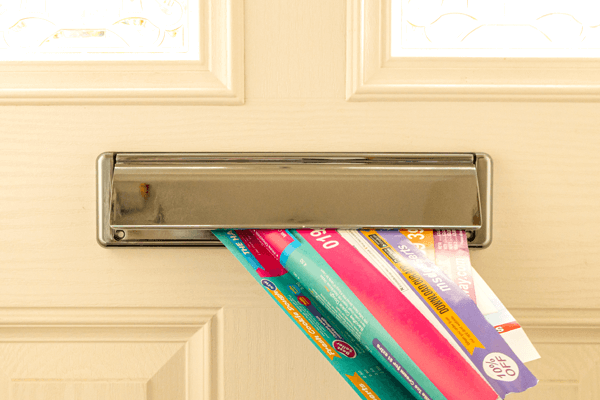MAIN TAKEAWAYS:
- Hyperpersonalized print uses detailed customer data to create highly targeted messaging to a very specific audience.
- This kind of data-driven approach to print requires integrating a clean, maintained CRM with a digital print solution.
- Hyperpersonalized print can help travel industry marketers increase engagement, boost bookings, and foster customer loyalty.
Travel is personal. Whether for business or leisure, the choices consumers make about where to go and how to get there are specific and individual. This is why marketers in the travel industry need timely, personalized marketing materials to connect with customers, increase bookings, and grow brand loyalty.
The travel industry has changed significantly over the last 20 years, and I’ve seen firsthand how customers increasingly want curated, custom experiences. Data-driven print opens the door to creating hyperpersonalized travel marketing materials that truly resonate with customers.
Here are just a couple of ways you can harness the power of a data-oriented approach to produce print marketing materials that help increase bookings and revenue.
What is hyperpersonalized print and why does it matter?
Traditional personalization starts the conversation by connecting with customers on a deeper level — it shows that marketers are invested in building relationships. Hyperpersonalization, however, goes beyond using a customer’s first name or location. It draws from data points like online activity, purchase history, customer milestones, and loyalty program information to create a highly custom, one-of-a-kind experience.
Hyperpersonalization taps into the essence of a customer — who they are and what they want — creating messaging that feels timely, human, and purposeful. When combined with the tactile, sensory appeal of print marketing, hyperpersonalization becomes a powerful tool for increasing bookings and enhancing brand loyalty.

How does data fuel hyperpersonalized print?
Creating hyperpersonalized print requires a data-driven approach, starting with integrating your customer relationship management (CRM) software with a digital print platform. This integration lets you leverage a wealth of first-party data to craft hyperpersonalized messaging complete with custom offers or unique incentives. This helps forge a stronger connection with your target audience.
The effectiveness of hyperpersonalized messaging hinges on the health and accuracy of your customer data. While accurate personalization can deliver significant results, inaccurate personalization can turn customers off and create negative impressions that are hard to overcome. This is where managing your CRM data becomes critical.
With a clean CRM, behavioral data and transactional data can fuel hyperpersonalized print for travel marketers in a couple of interesting and effective ways. Here’s how.
Highly targeted messaging and offers
A data-driven approach to print helps you create more targeted and relevant messaging and offers for each individual customer. Data such as recent bookings, frequency of travel, and average spend can help produce print materials that feel like a one-on-one conversation.
Digital integrations like QR codes or personalized URLs (PURLs) also enhance hyperpersonalized print — website visits, video views, and other digital actions provide key data points to analyze how contacts engaged with these digital integrations, helping you to better hone subsequent messaging or offers.
For example, geographic data could be used to print a brochure promoting airfare discounts on flights from the airport nearest to your target audience. Or you could send a postcard to a family of four with a special kids-stay-free vacation package based on their previous interest in kid-friendly destinations.
This not only demonstrates to customers that you understand their wants and needs but also significantly increases the likelihood of response, which is the most important metric to look at when evaluating the success of direct mail.
Triggered mailings
Hyperpersonalized print extends beyond granular data points — timing matters too. A data-driven print marketing strategy enables triggered mailings that start conversations with customers based on a wide variety of criteria.
For instance, you might send a postcard with a seat upgrade offer to a customer who has flown a certain number of miles in a year. Or a personalized brochure could be sent on the one-year anniversary of a customer’s trip to Rome, offering a culinary tour of Italy.
The timing of these touchpoints reinforces to customers that you’re committed to maintaining a relationship, making them more likely to advocate for your brand to friends and family.

What are the benefits of hyperpersonalized print?
The benefits of hyperpersonalized print for travel industry marketers are numerous. Some of these benefits include:
- Increased engagement. Hyperpersonalized print materials rooted in data create a more tangible connection with customers and outperforms more generic messaging.
- Higher conversion rates. Highly targeted messages and offers more effectively convert prospects into customers.
- Timely, relevant communication via data and print triggers to connect with customers when they’re at the decision-making stage.
- Improved customer loyalty. Hyperpersonalization fosters emotional connections, which can be powerful given the personal or even aspirational nature of travel.
The key takeaway is that data-driven, hyperpersonalized print maximizes your investment in print marketing. Tailored messaging resonates with customers, boosting bookings, increasing upsells such as accommodation upgrades or add-ons, and cementing brand loyalty.
Quantum brings decades of experience creating data-driven print that leverages customer information to deliver personalized messaging that engages and entices. As a strategic print partner, we have the expertise and resources to integrate your CRM with our digital print technology to craft print campaigns that help your company grow.
Contact us to get started on your next data-driven direct mail campaign.




